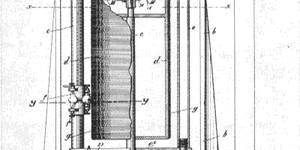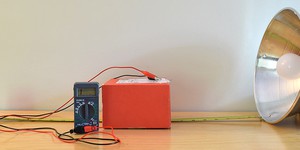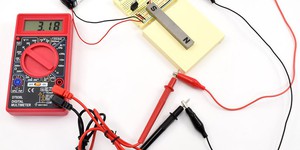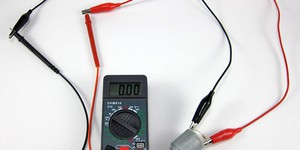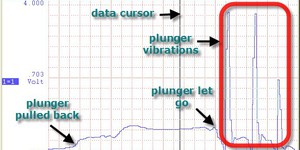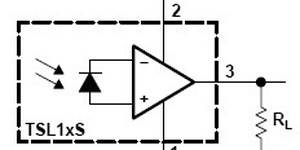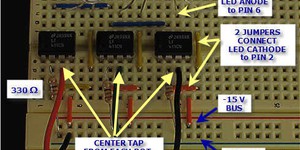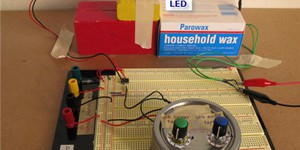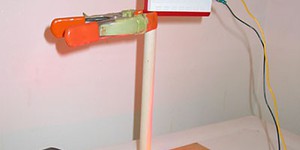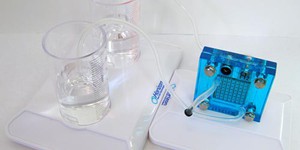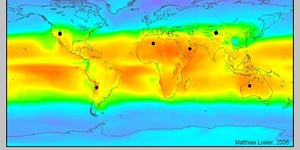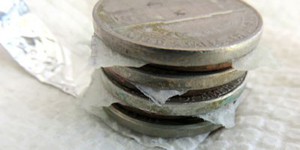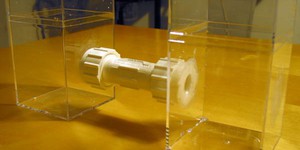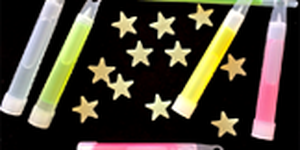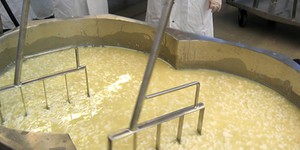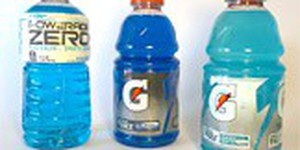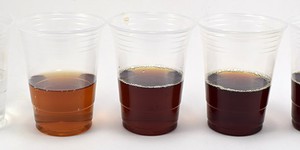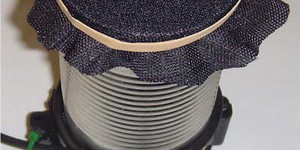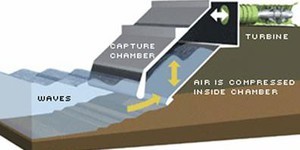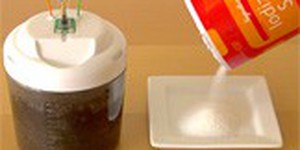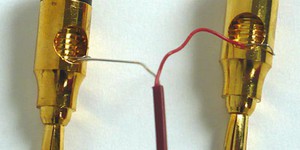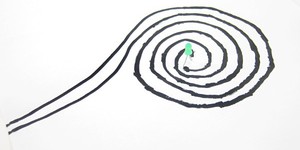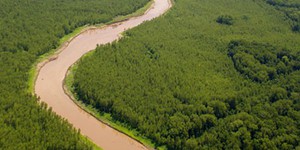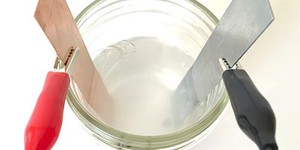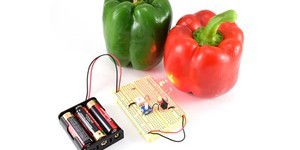How to Use a Multimeter
Log In
Want to learn more? Check out these other resources:
Project Resource
Learn the basic functions of a multimeter and how to measure voltage, resistance, and current with digital multimeters.
Read more
Today magnetic recording is used in audio and video cassette recorders, and computer disk drives. Did you know that you can also use an electromagnet to record and play back from a steel wire? In fact, this is how magnetic recording got started. This project shows you how to build a simple wire recorder.
Read more
How does the intensity of a light source change as you move away from it? This project describes a method to verify the inverse square law: how light, sound, electrical signals, and gravity each decrease with distance from their source. It does not matter if you are talking about a lightbulb or the sun; this law still applies!
Read more
Have you ever noticed how magnets appear to have no effect on each other when they are far apart? Then, when you slowly move them closer together, you will start to feel a gentle pull until they suddenly snap together? How exactly does the strength of a magnet change with distance, and how would you measure it if you wanted to find out? In this project you will build a circuit that can measure the strength of a magnetic field and see how the field strength changes with distance.
Read more
If you have ever built an electronic circuit with a soldering iron, you know that the component leads get hot. How much of that heat gets into the device you're soldering? This project shows you how you can use a silicon diode as a temperature sensor to find out.
Read more
How does a helicopter generate enough lift to fly? How does a speedboat get moving fast enough to pull someone on water skis? Here's a project on designing propellers to do the job.
Read more
Strike a key on the piano, and you hear the string vibrating. Just about any object vibrates when it's knocked, but how much and how fast? What properties of the material affect the way it vibrates? This project helps you find out. You'll build a simple light-sensing circuit for measuring the frequency of vibrating springs.
Read more
LEDs (light-emitting diodes) are electronic components that convert a portion of the electrical energy flowing through them into light. How does the intensity of the light produced vary with the current flowing through the LED? To find out, you'll build some simple circuits to vary the current flowing an LED. You'll also build a simple light-to-voltage converter circuit to measure LED output.
Read more
This is a good project for someone who is interested in both electronics and color vision. The equipment needed is on the expensive side, but if you continue studying electronics, you can use it again and again.
Read more
If you want to get your friend's attention at a crowded sporting event with lots of people cheering, you need to shout. If you're trying to do the same thing in a quiet library, a whisper works. The detection limit for each of our senses depends on the amount of "background" stimulation that is already present. This project uses an LED control circuit to investigate detection of changes in light levels.
Read more
You can see examples of parabolic reflectors in flashlights, car headlights, satellite TV antennas, and even on the sidelines at football games. How do these "dish" antennas work to gather signals? What is the best position for placing the detector for these antennas? In this project, you can use an LED and a simple photodetector to find out for yourself.
Read more
Global warming, climate change, melting ice caps—these are all big events that have an impact our environment. What can we do to help reduce the impact? We can reduce, reuse, and recycle. What can cities do to help? Cities can eliminate waste by saving energy. Cities around the world are switching from incandescent traffic signals to LED traffic signals to save energy and money. That's because LEDs are more efficient than incandescent lamps, which means that LEDs produce more light…
Read more
You probably know that turning off the lights and the water, and not wasting paper are all ways to help the environment and conserve our resources. Did you know that another way is to use fuel cells? A fuel cell is a device that converts the energy in chemicals to electricity and it creates no pollution. The starting chemical does not have to be something complex — in fact you it can even be water! In this science fair project try your own hand at converting water to electricity with the…
Read more
Do you like getting something for nothing? Everybody likes getting things for free. How about getting energy and power for free? The Sun sends us free energy every second and all we have to do is collect it. Taking advantage of free energy can reduce our dependence on fossil fuels, which are harmful to our environment. In this science fair project, you will work with a solar panel, which is a collector of free energy, and investigate how varying the angle of the solar panel, and thus the amount…
Read more
Solar cells provide a clean way of making electricity directly from sunlight. In this project you will build a simple circuit and experimental setup to investigate whether the power output of a solar cell changes with ambient temperature.
Read more
Solar cells are an alternative method for generating electricity directly from sunlight. With this project, you can get down to the atomic level and learn about the world of solid-state electronics as you investigate how solar cells work. Your experiment will measure the effect of changing light intensity on power output from the solar cell. A possible variation would be to investigate the effect of changing the color of the light.
Read more
Batteries are expensive, but you can make one for exactly 24 cents! In this experiment, you will make your own voltaic pile using pennies and nickels. How many coins in the pile will make the most electricity?
Read more
"Gross! What is that in the toilet?" But maybe it's not just gross. Did you know there are bacteria that digest organic waste and create electrons? What if there was a way to collect those electrons to power a circuit? In this science fair project, you will make a microbial fuel cell to collect the electrons that the bacteria—anaerobic bacteria—create...only, you'll be using mud, which is much safer to handle than wastewater. If you would like to learn how to reuse and recycle an…
Read more
Objects that glow in the dark hold a special place in the imagination of both children and adults. The lights go out at night, but these odd things refuse to disappear. Where does the light come from? Do they work in any climate? In this science fair project, you will make a very simple electronic device to measure the light given off by luminescent materials. The device will be used to study how temperature affects luminescence.
Read more
Have you ever gone to pour yourself a cup of milk and all you get is milk clumps? What happened to the milk is called coagulation, which is the mechanism that occurs when proteins in the milk clump together. While you do not necessarily want this in your milk, without coagulation (or curdling), there would not be any cheese or yogurt, which is why it is a very important process in the food industry. But what makes milk curdle? In this science project you will use pineapple juice to curdle milk…
Read more
Do you read the list of ingredients in foods and drinks before you buy them at the grocery store? If you do, you may have noticed that many of the items, especially colored drinks, contain dyes with names such as FD&C Blue 1, Red 40, or Yellow 5. But how much dye is needed to create all these colors? In this chemistry science project, you will build a simple spectrophotometer that is able to measure the concentration of colored chemicals in solutions. You will test your device by measuring…
Read more
A nice hot cup of tea sure can wake and warm you up in the morning. In this project, you will investigate the chemistry of tea. The longer you steep a tea bag in hot water, the stronger the tea will be. But how does the strength of the tea change with longer brewing time? In this project you will make a very simple electronic device to measure the strength of tea. The device will determine how strong the tea is by measuring the amount of light the tea absorbs.
Read more
Along with its many other interesting properties, water has the ability to absorb a lot of heat energy, while only experiencing a relatively small change in temperature. One way this property affects us directly is that our bodies don't change temperature rapidly on hot or cold days, since we are made up of mostly water. In this chemistry-with-an-electronics-flair science fair project, you will determine how the temperature of a small volume of water changes as you add precise amounts of heat…
Read more
Electronic devices can be designed to detect dangerous fumes or other hazards, such as smoke or carbon monoxide. In this electronics project, you will build another potentially life-saving detector—a radon detector. Radon gas is radioactive and can pose a hazard to your health if you live in an area where it leaks from the ground. In this electronics science project, you will learn how to collect radon with an ordinary dusting cloth mounted on the intake of a fan, and then measure its…
Read more
The ocean is a wondrous force of nature. It affects the weather, and provides us with food and renewable energy to power our lives. How can the ocean provide us with renewable energy? One way is to extract the energy that is in the waves. There are many kinds of power systems that can be installed to extract energy from the waves, depending on the location. In this energy and power science project, you will build and test a simple model of an oscillating water column device to create power. How…
Read more
Solar cells are popping up on rooftops everywhere these days and are a model for clean, renewable energy.
Did you ever look at those solar panels and wonder how we can get electricity produced by solar cells
when the sun is not shining? It is a great question because solar panels do not produce electricity when
it is dark outside. One strategy to overcome this challenge is to store the energy produced by solar
cells during the day in the form of a fuel that can be used at a later time. In…
Read more
Generating power from mud sounds like science fiction, but it is actually real science, and a promising source of alternative energy. Topsoil is packed with bacteria that generate electricity when placed in a microbial fuel cell. Because such bacteria-laden soil is found almost everywhere on Earth, microbial fuel cells can make clean, renewable electricity nearly anyplace around the globe. They are an up-and-coming technology that scientists and engineers are working to make even more…
Read more
Everyone knows electricity can create heat, especially because our electrical appliances tend to warm up when turned on. But wouldn't it be cool to do the reverse — generate electricity from heat? In this science project, you will study why it happens, measure the effect, and then use the phenomenon to build your own device, a thermocouple thermometer, that will enable you to convert heat into electrical energy.
Read more
Electric paint is a fun way to include a circuit with lights in an art project, but it presents a challenge not found in traditional electronic circuits. What happens if you change the length or width of your strokes of paint, such as by painting longer, curvier lines or using a thicker brush? Could this affect the electrical properties of your circuit? Try this project to find out!
Read more
Have you ever wondered how your clothes get their color? Dyeing textiles is a very complicated process and involves a lot of chemistry. Not only are the properties of the dye and fabric important, but the dyeing conditions also have to be exactly right to get optimal color adsorption. Curious about how it works? In this science project, you will color wool with Kool-Aid® and explore the chemistry of dyeing.
Read more
Your drinking water probably started out brown and muddy. Are you surprised? Maybe you were picturing it flowing from a clean mountain spring instead? All over the world, including in 68% of American homes, people get their drinking water from rivers, lakes, and other surface waters. This water is filled with dirt, debris, and other contaminants as it travels hundreds of miles. So, how does your drinking water go from brown and muddy to crystal clear? Often, flocculants—substances that…
Read more
Have you ever wondered how your cell phone or laptop keeps running once you unplug it? Sure, it is the battery that makes your portable electronics work, but how exactly does a battery do that, and from where does the electricity come? Generally, in a battery chemical energy is converted into electrical energy. In fact, many different types of batteries exist that are all based on a different set of chemical reactions. In this science project, you will explore a special battery variant called…
Read more
When you go to the supermarket, how do you pick out ripe fruits and vegetables? You might look at their size or color, or feel them for firmness. That might be easy to do when you pick out a half dozen apples, but imagine if you had to examine thousands of apples growing in a field, or strawberries coming down a conveyor belt getting ready for packaging. Suddenly, it is a lot harder to do yourself! What if a machine could pick and sort the produce for you? In this project, you will address part…
Read more
Have you ever accidentally burned out an LED while building a circuit? What about doing it on purpose—for science, of course! In this science project, you will intentionally send too much current through LEDs to see if they will burn out or even explode! How much current does it take to destroy an LED? How does this compare to the LED's rated current value? Try this project and find out! Check out this page for more LED science projects.
Read more
Explore Our Science Videos
Make an LED Night-Light
Why Soda Fizzes – Boyle’s Law Demonstration
How to Build a Toy Car - Science Project





